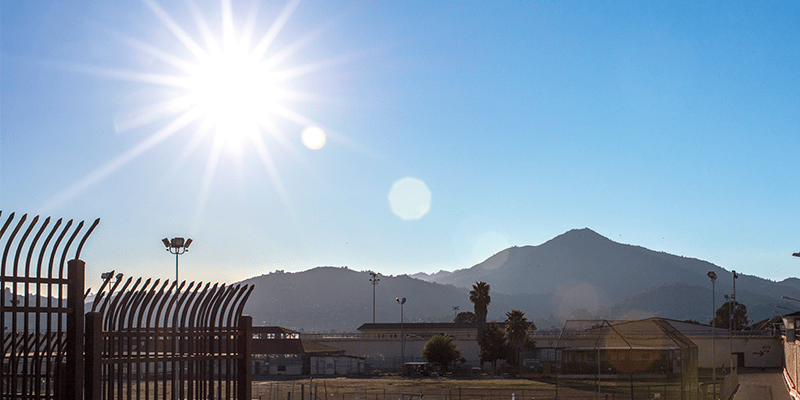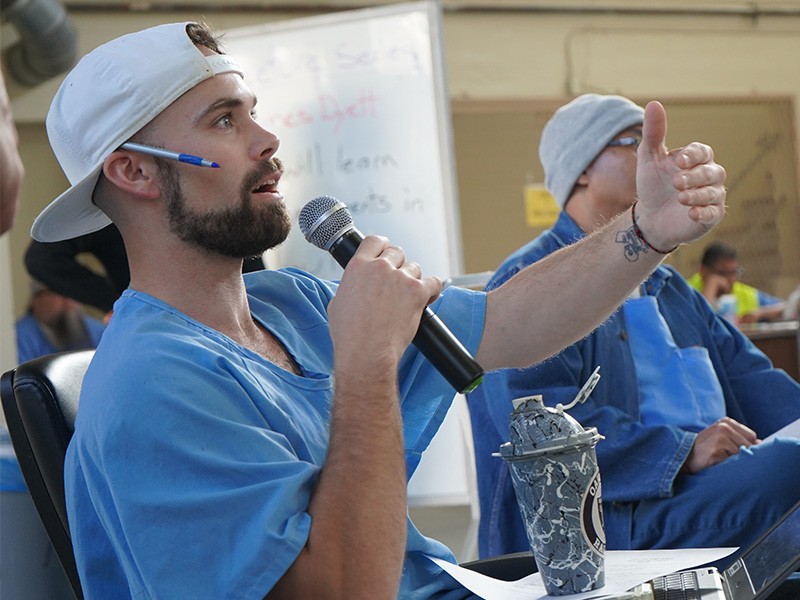A mock election held this month at San Quentin Rehabilitation Center uniquely mirrored the real-world electoral process, allowing all incarcerated individuals to exercise their voices. The election was a collaboration between incarcerated journalist Juan Moreno Haines and Mount Tamalpais College. ABC7 News and The Guardian have covered these efforts.
Civic Participation, Even Without the Right to Vote
Given that incarcerated individuals are denied the right to vote in California, as in most states, Haines has long championed mock election efforts inside the prison. This year, his efforts sparked a collaboration between MTC’s Chief Academic Officer Amy Jamgochian and the college’s fall American Government class, led by co-instructors Kirsten Pickering and Ian Sethre. Other MTC staff and faculty, as well as volunteers from the League of Women Voters, soon pitched into what became a large undertaking, all energized by Juan’s efforts.
“Organizing the mock election is consistent with Mount Tamalpais College’s mission to support any way possible of getting residents’ voices out into the world.”
– MTC Chief Academic Officer Amy Jamgochian
Jamgochian led the logistics and execution of the election while Pickering and Sethre integrated the mock election into their class, going beyond teaching political theory.
“Many people in prison come from communities that have been unjustly excluded from power and influence,” said Pickering, who is also Mount Tamalpais College’s Senior Researcher for Policy and Practice.
“This exclusion has often shaped their lives and, in some ways, contributed to how they ended up here. This mock election is a way to show them their voice matters, even if they can’t participate in official elections right now.”
“Disenfranchisement has significant and detrimental effects for not only incarcerated people but their home communities as well,” added Sethre. “For example, prison gerrymandering, where incarcerated citizens are counted as “residents” of specific counties—rather than their home districts—based on where they are incarcerated.”
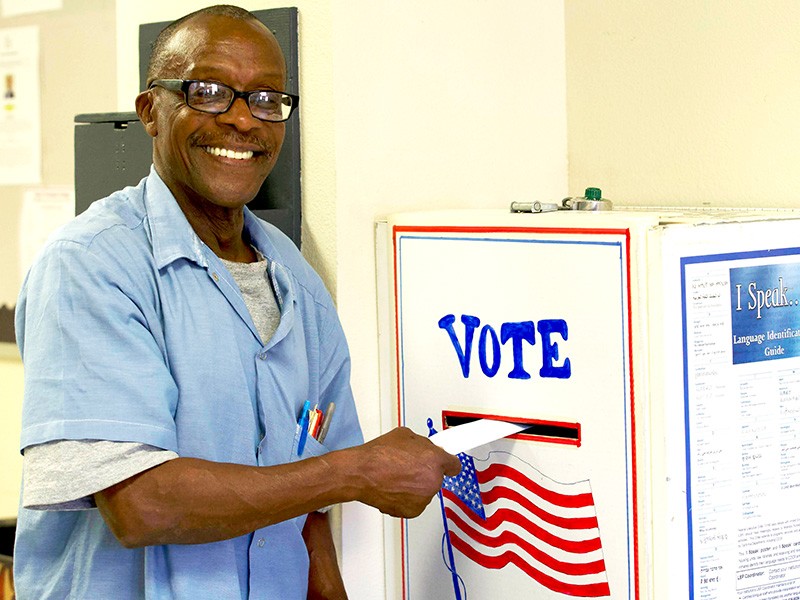
Designing the Ballot
MTC students in Pickering and Sethre’s class designed the ballot, facing similar challenges as real election officials: ensuring ballot security and creating materials that were accessible and easy to understand. They decided to print the ballot in Spanish and to use yellow paper—an uncommon material inside the prison—to prevent forgery.
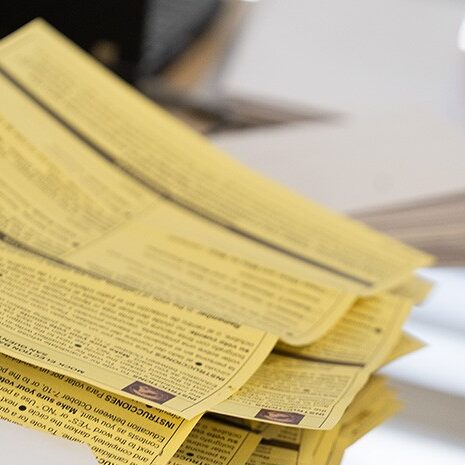
“On the surface, ballot design seems simple, but we’ve been exploring some of the more complex aspects, such as space management, layout coherence, clarity of instructions, and language access, all of which can complicate the voting process,” explained Sethre.
Students selected four statewide propositions to be featured on the ballot–Propositions 5, 6, 32, and 36–deliberating which measures would resonate most with their community. Prop 6, for example, addresses the abolition of forced labor and servitude in prisons and jails.
Prop 5 would change the vote threshold needed to pass affordable housing projects. These issues sparked lively debate.
“Some students with more conservative views argued that government borrowing for infrastructure isn’t the right solution,” Pickering noted. “Others disagreed, saying it was essential for community investment. These conversations were incredibly thoughtful.”
Another point of discussion centered on whether to include the California Senate race on the ballot. Students weighed the pros and cons of adding a candidate race without partisan labels, speculating how incarcerated voters might approach political identity. “Would they vote Democrat for president but lean Republican for Senate? The students found these dynamics fascinating,” Pickering said.
The MTC students wrote the voter guide as well and distributed them with the ballots. The guide included summaries and pro-and-con arguments for each proposition.
Civic Engagement as Empowerment
Many of the participants in the mock election had never voted before or felt disillusioned by the system.
“I’ve never voted before, never thought it mattered,” shared a student in an anonymous comment on their ballot, echoing a common refrain. But they added: “If I don’t vote, I can’t complain.”
“I didn’t know who would see my vote and where it would go, and I was afraid of retaliation,” said Oscar, another San Quentin resident who preferred we not use his last name.
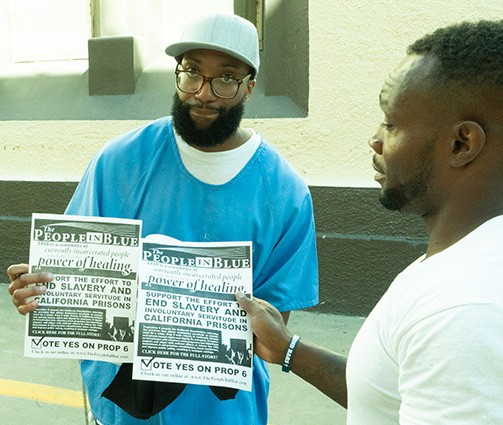
Others, however, were already deeply engaged with politics, challenging misconceptions about incarcerated individuals’ disconnection from society. “Society tends to overlook how informed and engaged people in prison are,” Pickering remarked. “This election will show just how deeply they care about the political process.”
Indeed, San Quentin resident Michael Vilkin, 72, said he likes the mock election because it allows him to educate people about economic concepts that are important to him.
The hope is that the election will inspire greater civic participation. As one participant put it, “Even if I can’t vote right now, I can tell my family what to pay attention to on the ballot.”
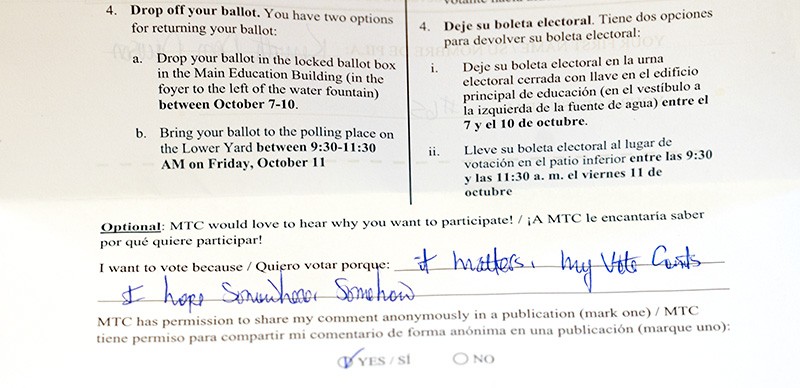
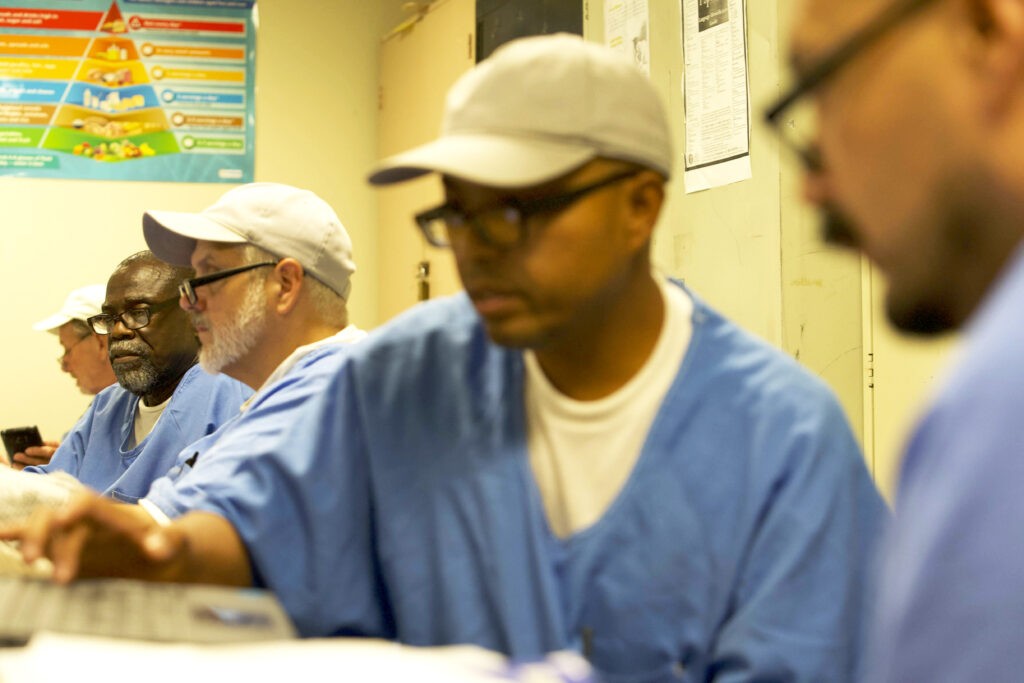
Getting the Vote Out
Distributing 3,200 ballots to the entire incarcerated population required meticulous coordination. MTC staff, along with MTC faculty volunteers and volunteers from the League of Women Voters, spent hours assembling voter guides and ballot packets.
“The process of folding, packing, and mailing out the ballots was a huge undertaking,” said Pickering. “It was only possible because of the incredible support from staff and volunteers.”
As the ballots were folded, the energy continued to build. Jamgochian recalled the enthusiasm that radiated from the volunteers. “Personally, it’s always really gratifying to be involved in a big project that feels meaningful,” remarked Jamgochian. “It’s a sign that MTC jumped into these collaborative efforts.”
In addition to the ballot itself, participants received a cover sheet where they could share why voting mattered to them. Collected anonymously, these responses will provide insight into the election’s significance for the incarcerated community.

The Results
After tallying 341 total votes, representing 10.5% of the prison’s population, the mock election yielded the following results.
PRESIDENTIAL RACE
WINNERS, KAMALA HARRIS AND TIM WALZ
Kamala Harris and Tim Walz won with 56.88% of the vote, compared to Donald Trump and J.D. Vance, who brought in 26.25% of the vote. Third-party candidates were well represented, taking 9.65% of the total vote. Claudia de la Cruz and Karina Garcia of the Peace and Freedom Party took 3.75% and Jill Stein and Butch Ware of the Green Party took 2.81%, with Robert F. Kennedy, Jr., Chase Oliver, and write-in candidates representing less than 2% of the vote.
SENATE RACE
(FULL AND PARTIAL TERM) – WINNER, ADAM SCHIFF
Democrat Adam Schiff defeated his Republican opponent Steve Garvey for Senate for both the full and partial term. Schiff took 31.88% of the vote for the full term compared to Garvey at 16.88%. Over half of the voters left both the full and partial-term race for Senate blank.
CALIFORNIA PROPOSITIONS
| PROP 5 – PASSED – 59.06% | PROP 32 – PASSED – 77.81% |
| PROP 6 – PASSED – 75.31% | PROP 36 – FAILED – 57.81% |
Photos: Bonaru Richardson








